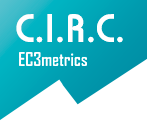Submission Preparation Checklist
As part of the submission process, authors are required to check off their submission's compliance with all of the following items, and submissions may be returned to authors that do not adhere to these guidelines.- The submission has not been previously published, nor is it before another journal for consideration (or an explanation has been provided in Comments to the Editor).
- The submission file is in OpenOffice, Microsoft Word, or RTF document file format.
- Where available, URLs for the references have been provided.
- The text adheres to the stylistic and bibliographic requirements outlined in the Author Guidelines, which appear in About the journal.
- Registration and login is required to submit items online and check the status of the latest shipments. Ir a Iniciar sesión a una cuenta existente o Registrar una nueva cuenta en https://revistas.um.es/iqual
- As part of the shipping process, submitters are required to check that their shipment meets all of the elements, shown below. Shipments that do not meet these guidelines will be returned.
- Submitters must provide references to similar work that has already been published, or is currently under consideration by another journal. If the work has already been presented in a paper, details should be provided in a cover letter. The journal will take into account the publication of the work previously presented as a short abstract or poster at a conference, but not as a full paper. If previously published tables, illustrations or more than 200 words of text are to be included, the author will submit to the Secretariat written permission from the copyright holder. Including copies of all letters of permission. Please note that if deemed appropriate, plagiarism checking software may be applied to your manuscript during the editorial review process.
- The title, abstract and keywords comply with the above requirements.
- The submission of the article with the summary (headings/paragraphs).
- The text, font size and margins follow the above indications.
- The text complies with the bibliographic and stylistic requirements indicated in the Guidelines for Authors, which can be found in the Guidelines for Authors under Submissions.
- The instructions in Secure an anonymous evaluation must be followed.
- The ORCID identification number of all authors must be provided, as well as the contribution of each author.
- The agency or body funding the research must be stated.
- The deadline for receiving articles is until September 15 of each year.
Privacy Statement
The names and email addresses entered in this journal site will be used exclusively for the stated purposes of this journal and will not be made available for any other purpose or to any other party.







